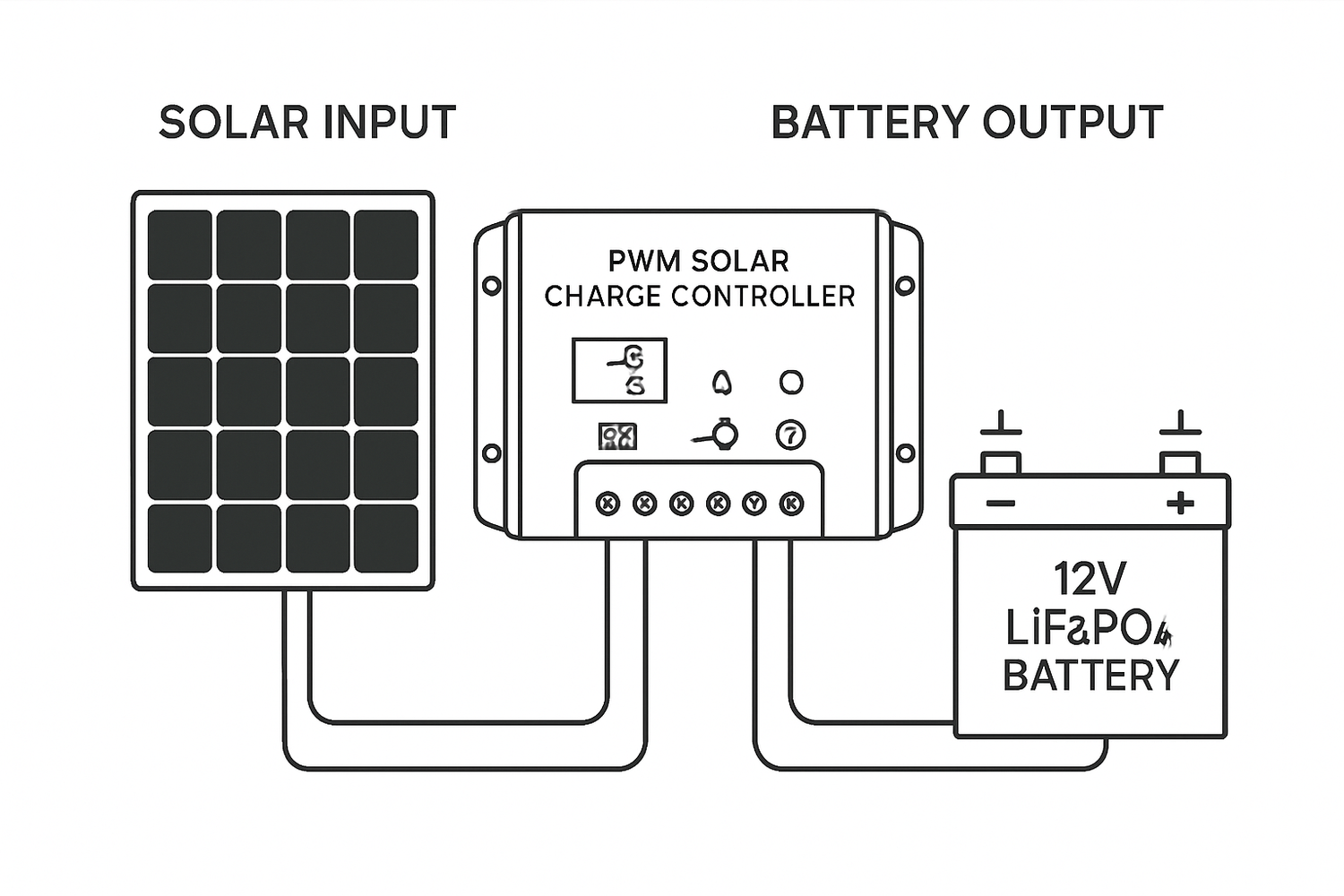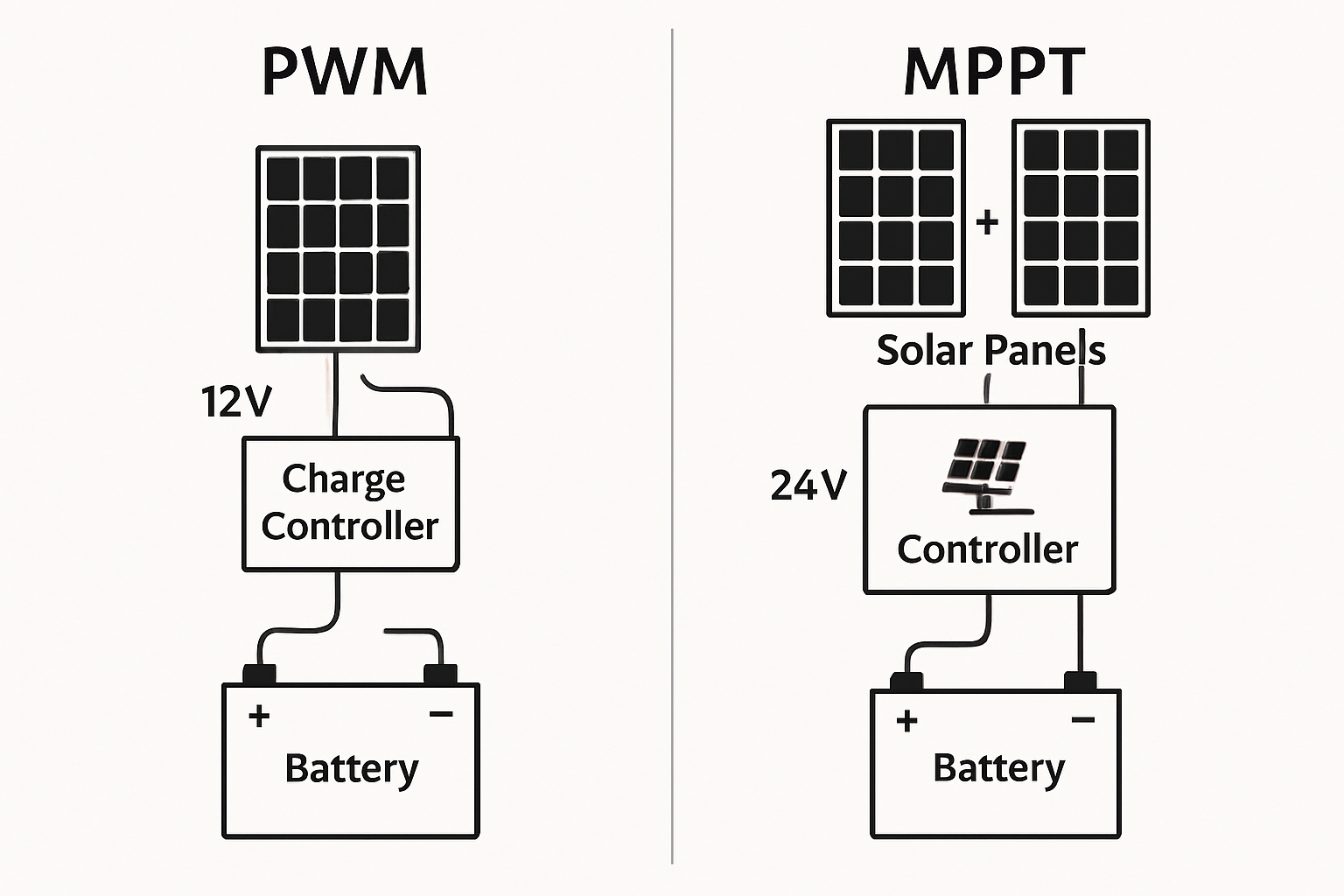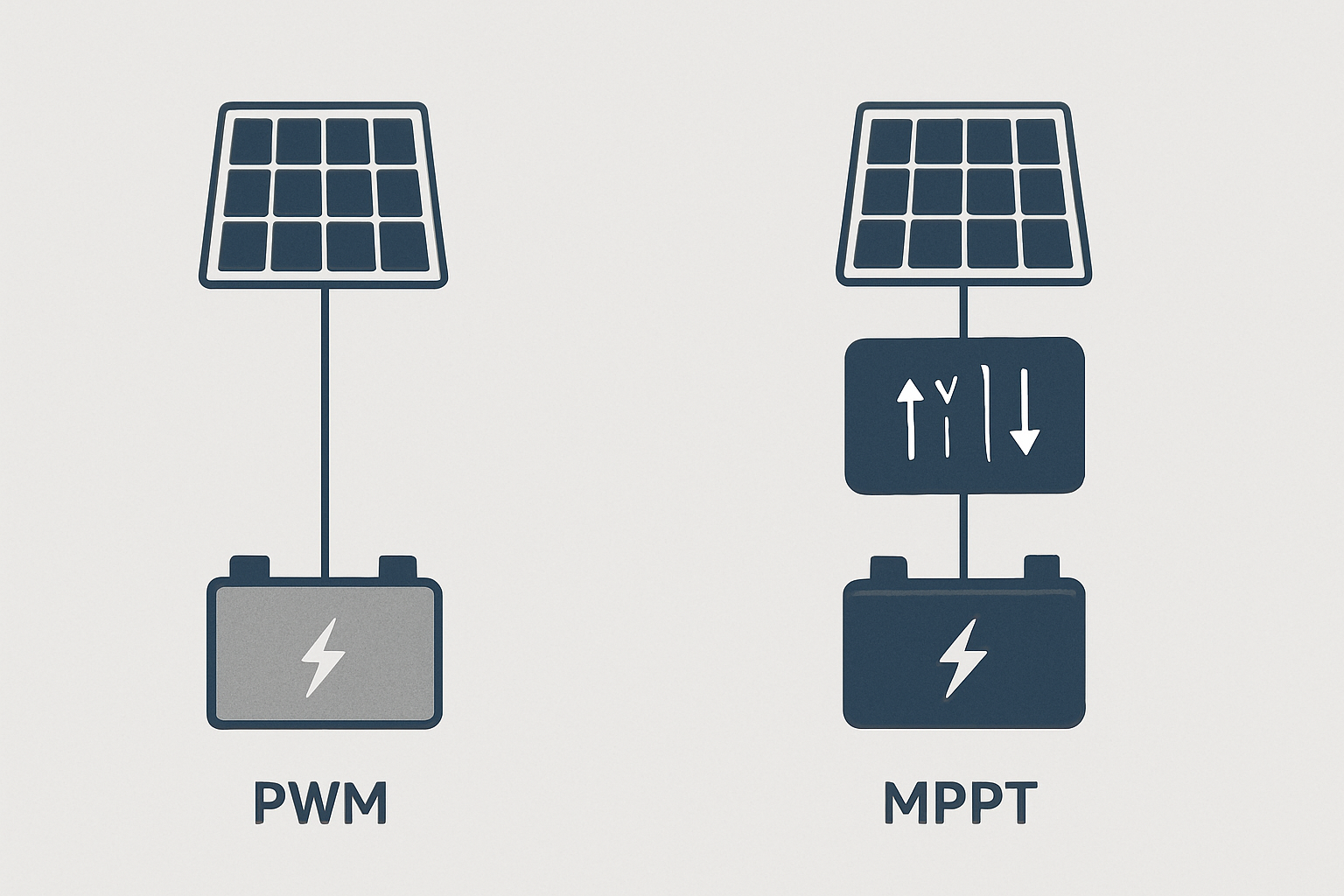In any off-grid solar system, the charge controller is a critical component that protects your batteries from overcharging and optimizes the power flow from your solar panels. While Maximum Power Point Tracking (MPPT) controllers are often highlighted for their superior efficiency, Pulse Width Modulation (PWM) controllers remain a highly practical and cost-effective solution in specific situations. Understanding these scenarios ensures you build a reliable and economically sound solar setup.
Understanding PWM Controller Technology
A PWM controller functions as a sophisticated switch between the solar panels and the battery bank. It operates by rapidly connecting and disconnecting the panels to maintain the battery at a safe voltage. This process is managed through distinct charging stages to ensure battery health.
How PWM Controllers Regulate Voltage
The controller uses short, rapid pulses to send energy to the battery. As the battery approaches full charge, the controller shortens these pulses, reducing the amount of energy flowing in. This 'pulse width modulation' allows it to precisely manage the charging process through three key phases: bulk, absorption, and float. This method is straightforward and has proven its reliability over many years in countless small-scale applications.
Key Operational Characteristics
The defining characteristic of a PWM controller is its need for voltage matching. For optimal performance, the nominal voltage of your solar array must match the nominal voltage of your battery bank. This means you would use a 12V solar panel to charge a 12V battery. The controller effectively pulls the panel's voltage down to the battery's charging voltage. This operational principle is central to determining where a PWM controller is the most sensible choice.
The Ideal Conditions for a PWM Controller
Certain conditions related to system size, climate, and budget make a PWM controller not just a viable option, but often the superior one. Recognizing these situations helps you avoid overspending on technology your system doesn't require.
Small-Scale Solar Systems
For smaller, simple off-grid solar systems, a PWM controller is an excellent fit. Think of applications like solar-powered lighting, powering a gate opener, or a small setup for an RV or boat with one or two panels. In these cases, the total power generation is relatively low, so the potential energy gains from a more expensive MPPT controller are minimal. The lower upfront cost of the PWM unit makes it a much more proportional investment.
Favorable Environmental Conditions
PWM controllers operate most efficiently in warm, sunny climates. In high temperatures, a solar panel's operating voltage (Vmp) naturally decreases, bringing it closer to the battery's charging voltage. Since the PWM controller doesn't have to work as hard to pull the panel's voltage down, the efficiency loss is reduced. In contrast, in very cold conditions, a panel's voltage increases significantly, and a PWM controller cannot capture that extra potential power.
When Budget is the Primary Constraint
Cost is a major factor in any project. PWM controllers are significantly less expensive than their MPPT counterparts. For non-critical applications, DIY projects, or entry-level systems, the savings can be substantial. This allows you to allocate more of your budget toward other critical components, such as high-quality batteries or additional solar panels.
A Technical Comparison: PWM vs. MPPT
The decision between PWM and MPPT often comes down to a trade-off between cost and efficiency. A direct comparison of their technical capabilities clarifies the strengths and weaknesses of each technology.
Efficiency and Power Harvest
The primary advantage of an MPPT controller is its ability to convert excess panel voltage into additional charging current. This leads to efficiency ratings often above 95%. A PWM controller, by pulling the panel voltage down, cannot perform this conversion and typically operates at an efficiency of 75-80%. While this difference seems large, its real-world impact depends entirely on the system's scale. As research from the International Energy Agency in its Next Generation Wind and Solar Power (Full Report) highlights, effective power electronics are fundamental to optimizing generation, a principle that applies to both large grids and small off-grid setups.
| Feature | PWM Controller | MPPT Controller |
|---|---|---|
| Efficiency | 75-80% | 95-99% |
| Cost | Low | High |
| Voltage Compatibility | Requires matched panel and battery voltage | Flexible; can use high-voltage panels with low-voltage batteries |
| Ideal System Size | Small (under ~200W) | Medium to Large |
| Best Climate | Warm / Temperate | All climates, especially cold |
System Sizing and Voltage Flexibility
PWM controllers are restrictive in system design, demanding that panel and battery voltages match. MPPT controllers offer much greater flexibility. They allow you to use higher-voltage arrays (like common 60-cell residential panels) to charge lower-voltage battery banks (e.g., 12V or 24V). This capability enables longer wire runs with smaller, less expensive cables, reducing overall system complexity and cost in larger installations. The U.S. Department of Energy emphasizes the importance of advanced power electronics like inverters and controllers for grid stability and efficiency, a concept that scales down to off-grid resilience. Their work with advanced inverters shows how critical these components are in managing power flow.
Making the Right Choice for Your System
A PWM controller is not an outdated technology; it is a specialized tool that excels in the right application. Its simplicity, reliability, and low cost make it the clear winner for small, budget-conscious projects in temperate climates. For these systems, the financial outlay for an MPPT controller would not deliver a worthwhile return. The key is to analyze your specific needs—system size, panel configuration, and budget—to make an informed decision. By matching the right components, you build a system that delivers reliable power and achieves your energy independence goals. A critical part of this is ensuring your controller and battery work in harmony. For instance, pairing your controller with a high-performance 12V 100Ah LiFePO4 battery requires an understanding of overall solar storage performance to maximize both efficiency and lifespan.
Disclaimer: This information is for educational purposes only. It is not financial or legal advice. Consult with a qualified professional before making any investment decisions or system installations.
Frequently Asked Questions
Can I use a PWM controller with a lithium battery?
Yes, you can use a PWM controller with a lithium iron phosphate (LiFePO4) battery, but it is critical to select a model that has a specific charging profile designed for this chemistry. LiFePO4 batteries have strict voltage requirements and do not tolerate overcharging. A dedicated lithium setting will ensure the controller uses the correct voltage points and avoids damaging the battery or its internal Battery Management System (BMS).
What happens if I use a high-voltage panel with a PWM controller and a 12V battery?
If you connect a panel with a high nominal voltage (e.g., a 24V panel) to a PWM controller charging a 12V battery, the controller will force the panel to operate at the battery's voltage. This action effectively 'clips' the panel's voltage, causing all the potential power from the excess voltage to be lost. This results in a highly inefficient system where you are not harvesting the full power capacity of your solar panel.
Is a larger PWM controller better than a small one?
The size of a charge controller is rated in amperes (amps). The correct size for your system is determined by the solar array's short-circuit current (Isc). Using a controller that is too small for your array's current output will cause it to overheat and fail. Conversely, using an oversized controller provides no performance advantage and is an unnecessary expense. You should calculate your array's maximum possible current and select a controller with a rating at least 25% higher to provide a safe operational margin.





Leave a comment
All comments are moderated before being published.
This site is protected by hCaptcha and the hCaptcha Privacy Policy and Terms of Service apply.